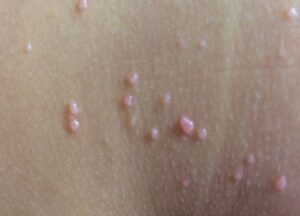How to Tell Swimmer’s ear From an ear Infection


Swimmer’s ear (otitis externa) occurs when the outer part of the ear and the canal leading to the eardrum becomes inflamed and painful. Swimmer’s ear is different from the more common ear infections that occur in the middle ear, or otitis media (the middle ear includes the eardrum, the eustachian tubes that connect to the back of the throat, and the three small bones that convey sound). Simply, otitis externa is a problem of the parts of the ear in front of the eardrum or the external auditory canal, otitis media is a problem of the parts of the ear behind it.
Swimmer\’s ear is usually caused by a combination of a wet warm ear auditory canal and:
- Swimming in poorly chlorinated water, such as lakes or backyard kiddie pools.
- Items that become stuck in the ear (toddlers love to put small objects in their ears).
- Picking or scratching the ear canal.
- How can you tell that your child has swimmer\’s ear, as opposed to a more common middle ear infection? Symptoms of swimmer’s ear include:
- A yellow or yellow-green pus-like drainage from the affected ear.
- Complaints about ear pain but without fever or cold symptoms.
- A red, swollen ear.
- A constant desire to scratch the affected ear or the inside of the ear canal.
Unlike middle ear infections, a swimmer’s ear is not typically accompanied by a fever, irritability and crying, or problems sleeping.
Fortunately, a swimmer’s ear is usually easy to treat. Your pediatrician will likely prescribe antibiotic ear drops, which you give to your child over the course of 10-14 days, as well as (in some cases) corticosteroid ear drops to stop the itching and inflammation. Most pediatricians use a combination drop. If the infection is significant, leading to impressive swelling of the ear or a canal so swollen that you cannot put drops into it, your doctor may add an ear “wick” and oral antibiotics.
Your child can return to the water after just a few days of treatment. Keeping the ear canal dry can prevent a recurrence of the swimmer’s ear. There are over the counter ear dry drops containing isopropyl alcohol that can be used to dry out wet ear canals. Ask your doctor if they are appropriate for your child.
Sources:
- U.S
- National Library of Medicine
- Swimmer’s ear.
Medscape - How Should Swimmer’s Ear (Acute Otitis Externa) Be Managed?
Powered by Bundoo®










































